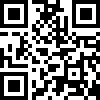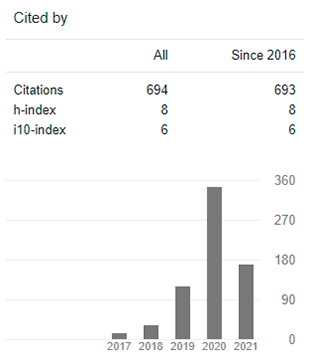Second Life experience for teaching Physical Education
DOI:
https://doi.org/10.29394/Scientific.issn.2542-2987.2022.7.23.13.250-267Keywords:
teachings to distance, physical education, virtual world, second lifeAbstract
The article presented below offers an explanation of the implementation of an innovative didactic proposal in the Physical Education classroom of the Distance University of Madrid with students of the Teaching Degree in Primary Education. With the aim that the students of this subject can present and carry out motor exercises in a practical way, the virtual world Second Life is used as a stage. The students who voluntarily wanted to participate had 15 minutes to expose the tasks in the Sandbox territory. The sessions were held during the month of May, on Monday and Wednesday afternoons. During the month of April, a small study was carried out with the aim of knowing the satisfaction of the participants. The results show that the experience aroused interest in the subject in the students, that the immersion provided them with greater learning and that they felt closer to the teaching practice. In this way, it is concluded that Second Life is a valid tool to deal with some contents of the Physical Education area at the university, providing fun and well-valued experiences.
Downloads
References
Ayala, R., Laurente, C., Escuza, C., Núñez, L., & Díaz, J. (2020a,b). Mundos virtuales y el aprendizaje inmersivo en educación superior. Propósitos y representaciones, 8(1), 1-17, e-ISSN: 2310-4635. Recuperado de: http://dx.doi.org/10.20511/pyr2020.v8n1.430
Calderón, S., Tumino, M., & Bournissen, J. (2020a,b). Realidad virtual: impacto en el aprendizaje percibido de estudiantes de Ciencias de la Salud. Tecnología, Ciencia y Educación, 16, 65-82, e-ISSN: 2444-2887. Recuperado de: https://doi.org/10.51302/tce.2020.441
Campos, M., Navas-Parejo, M., & Moreno, A. (2020a,b,c). Realidad virtual y motivación en el contexto educativo: Estudio bibliométrico de los últimos veinte años de Scopus. Alteridad: Revista de Educación, 15(1), 47-60, e-ISSN: 1390-8642. Recuperado de: https://doi.org/10.17163/alt.v15n1.2020.04
Cózar, R., González-Calero, J., Villena, R., & Merino, J. (2019). Análisis de la motivación ante el uso de la realidad virtual en la enseñanza de la historia en futuros maestros. Edutec. Revista Electrónica De Tecnología Educativa, (68), 1-14, e-ISSN: 1135-9250. Recuperado de: https://doi.org/10.21556/edutec.2019.68.1315
Espinoza-Freire, E., Serrano, O., & Brito, P. (2017). El trabajo autónomo en estudiantes de la Universidad Técnica de Machala. Universidad y Sociedad, 9(2), 202-212, e-ISSN: 2218-3620. Recuperado de: https://rus.ucf.edu.cu/index.php/rus/article/view/569
Granda, L., Espinoza, E., & Mayon, S. (2019). Las TIC como herramientas didácticas del proceso de enseñanza-aprendizaje. Conrado, 15(66), 104-110, e-ISSN: 1990-8644. Recuperado de: https://conrado.ucf.edu.cu/index.php/conrado/article/view/886
Gómez-García, G., Rodríguez-Jiménez, C., & Ramos-Navas-Parejo, M. (2019a,b). La realidad virtual en el área de educación física. Journal of Sport and Health Research, 11(Supl 1), 177-186, e-ISSN: 1989-6239. Recuperado de: https://dialnet.unirioja.es/servlet/articulo?codigo=7023969
Hanson, J., Andersen, P., & Dunn, P. (2019). Effectiveness of three-dimensional visualisation on undergraduate nursing and midwifery students' knowledge and achievement in pharmacology: A mixed methods study. Nurse Education Today, 81, 19-25, e-ISSN: 0260-6917. Recovered from: https://doi.org/10.1016/j.nedt.2019.06.008
Klippel, A., Zhao, J., Jackson, K., La Femina, P., Stubbs, C., Wetzel, R., … Oprean, D. (2019). Transforming Earth Science Education Through Immersive Experiences: Delivering on a Long Held Promise. Journal of Educational Computing Research, 57(7), 1745-1771, e-ISSN: 0735-6331. Recovered from: https://doi.org/10.1177/0735633119854025
Lorenzo-Álvarez, R., Rudolphi-Solero, T., Ruiz-Gómez, M., & Sendra-Portero, F. (2019). Medical Student Education for Abdominal Radiographs in a 3D Virtual Classroom Versus Traditional Classroom: A Randomized Controlled Trial. Ajr: American Journal of Roentgenology, 213(3), 644-650, e-ISSN: 0361-803X. Recovered from: https://doi.org/10.2214/AJR.19.21131
Magallanes, J., Rodríguez, Q., Carpio, Á., & López, M. (2021). Simulación y realidad virtual aplicada a la educación. Reciamuc, 5(2), 101-110, e-ISSN: 2588-0748. Recuperado de: https://reciamuc.com/index.php/RECIAMUC/article/view/651
Makransky, G., & Lilleholt, L. (2018). A structural equation modeling investigation of the emotional value of immersive virtual reality in education. Educational Technology Research and Develompment, 66(5), 1141-1164, e-ISSN: 1556-6501. Recovered from: https://psycnet.apa.org/doi/10.1007/s11423-018-9581-2
Oliveros-Castro, S., & Núñez-Chaufleur, C. (2020a,b). Posibilidades educativas de la realidad virtual y la realidad combinada: una mirada desde el conectivismo y la bibliotecología. Revista Saberes Educativos, (5), 46-62, e-ISSN: 2452-5014. Recuperado de: https://doi.org/10.5354/2452-5014.2020.57783
Piscitelli, A. (2017a,b). Realidad virtual y realidad aumentada en la educación, una instantánea nacional e internacional. Economía Creativa, (7), 33-65, e-ISSN: 2395-8200. Recuperado de: https://dialnet.unirioja.es/servlet/articulo?codigo=6063065
Yang, X., Lin, L., Cheng, P., Yang, X., & Ren, Y. (2019). Which EEG feedback works better for creativity performance in immersive virtual reality: The reminder or encouraging feedback?. Computers in Human Behavior, 99, 345-351, e-ISSN: 0747-5632. Recovered from: https://doi.org/10.1016/j.chb.2019.06.002
Downloads
Published
How to Cite
Issue
Section
License
Copyright (c) 2022 INDTEC, C.A.

This work is licensed under a Creative Commons Attribution-NonCommercial-ShareAlike 4.0 International License.
The content of the journals of this site, are under a Creative Commons Attribution-Noncommercial-Share Alike 4.0 International License.













